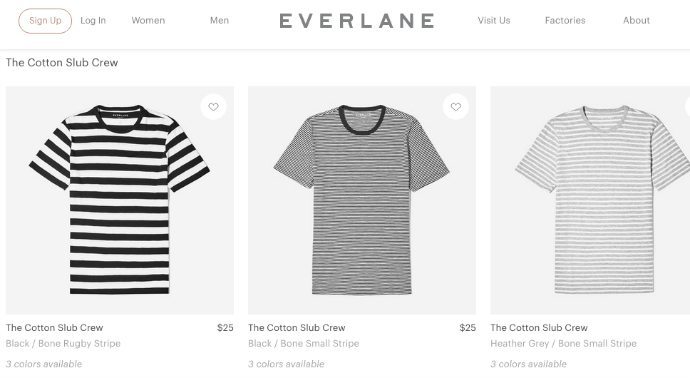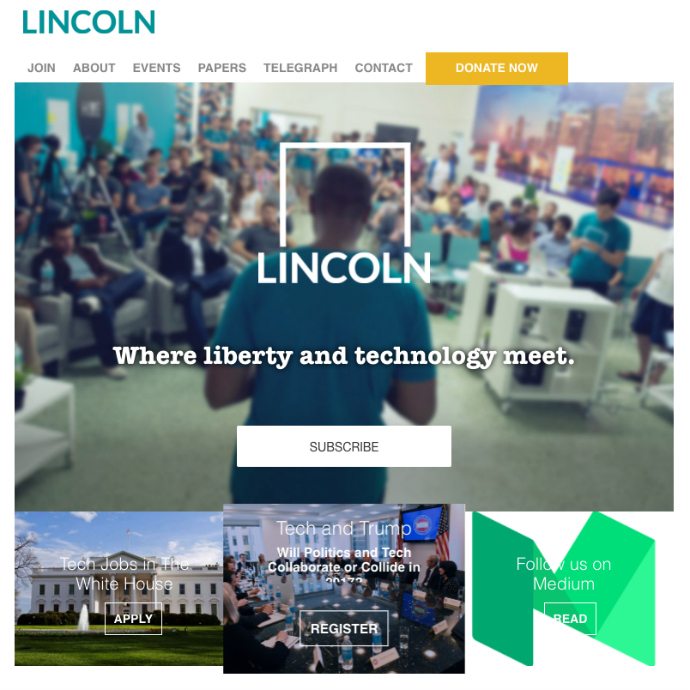March 31, 2017
Aaron Ginn is Growth Hacking Silicon Valley and Washington DC
Back in 2012, Aaron Ginn authored Defining a Growth Hacker, a six-part series for TechCrunch_. The seminal work gave a name and a face to the movement sweeping through Silicon Valley. We sat down with Aaron to talk through how growth hacking became a thing, what he learned during his time at StumbleUpon_ and Everlane, and how he’s bridging the worlds of government and technology. Here’s his story.
The growth of growth hacking
Aaron got his start in growth at a company that had three months to live. He had to hustle. His day-to-day work was consumed not just with generating traffic, but also running product experiments to drive growth down the funnel. That meant activating first-time users and retaining them for the long haul. These activities were related to marketing. In a way. But unique and separate as well. On the brink of running out of cash, and thanks to Aaron’s newly minted growth skills, the company turned things around receiving a bridge round and a Series A round within nine months. Networking in the Valley during this time put Aaron in touch with others like him; people whose day-to-day tasks crisscrossed between product and marketing. This included people like _Matt Humphrey_ and _Jesse Farmer_ who recognized how this unique blend of skills could move the needle. Sean Ellis coined this type of person as a growth hacker, to differentiate between the typical brand-focused marketer who wanted to spend big bucks on Super Bowl ads and the more technically-inclined engineer who toiled away on the core product. Growth hacking brought both worlds together.
 Flashback to July 2010
Flashback to July 2010
This group started to self-organize in the early days (Aaron calls them the Growth Hacker Mafia) and their work, along with Aaron’s six-part Techcrunch series, helped push the growth hacking movement over the edge and into the mainstream for technology companies. But this was almost 5+ years ago. Today the movement has taken on a life of its own. Aaron believes that today’s version is much broader than the original idea. “Most things associated with growth today are marketing or are associated with marketing. In the beginning growth hacking was viewed more as product-specific experiments, UI treatments, product flows, and more. Many of these were generally organic techniques based on iteration. There are actually very few and far between true hacks.” Maybe that’s why there’s not more unicorns. ;)
Growing with Stumbleupon and Everlane
In 2012, Aaron became the head of growth at StumbleUpon, where he was tasked with rebuilding the product team infrastructure. At smaller organizations before, Aaron was free to run experiments as he saw fit. But within a more established company, he ran into issues of scale (not of the growth kind). He had to learn how to navigate testing environments when other teams owned particular features. He had also never dealt with large scale technical debt in refactoring websites or running a re-architecture project before. This was a learning experience in navigating organizational structures. The issues of scale appeared again when he joined Everlane as growth product manager in 2014. They, too, wanted to build out a product team, including data scientists to performance marketers and UX people, to define the vision for much of the Everlane mobile app and website experience you see today.  Before Everlane, Aaron “didn’t really care about brand.” But at the company, there was a radical focus on cultivating a deeper experience for the brand’s impact. (See:Where MBA’s can actually help growth hacking.) He was able to bring his data-driven technology background to merge with Everlane’s strength of being a values-driven brand. In Aaron’s words, this “tension between creativity and technology is healthy.” Around this time, like the growth hacking movement, Aaron’s side hustle began to take on a life of its own.
Before Everlane, Aaron “didn’t really care about brand.” But at the company, there was a radical focus on cultivating a deeper experience for the brand’s impact. (See:Where MBA’s can actually help growth hacking.) He was able to bring his data-driven technology background to merge with Everlane’s strength of being a values-driven brand. In Aaron’s words, this “tension between creativity and technology is healthy.” Around this time, like the growth hacking movement, Aaron’s side hustle began to take on a life of its own.
Bridging the gap between SF & DC
There are about 2,437 miles between San Francisco and Washington DC. Aaron should know, splitting his time equally today in both places. But they’re worlds apart in culture and mindset. Silicon Valley is fast, DC is slow. Silicon Valley is results-oriented, DC is about social capital. Silicon Valley is efficient, DC is well…DC. Or as Aaron puts it: “Silicon Valley thinks differently about how to approach problems. One of most important lessons I learned from leading growth is weighing impact versus cost. You’re running experiments all day, trying to push down cost and increase impact. It’s results-oriented and efficient…basically the opposite worldview of people in politics.” The organization Aaron co-founded, The Lincoln Network, aims to bridge this gap between the worlds of technology and government. Their vision “was born from the optimistic view that when technology and public policy meet, under the right conditions and with the right tools, both worlds win.”  Politicians and techies, together at last. Aaron’s background makes him the ideal person to bring both groups together. He was the youngest member elected to the executive committee for the _CAGOP_ and worked on various state, federal, and presidential campaigns, including the Romney 2012 POTUS campaign. Not to mention his stints at StumbleUpon and Everlane—both born and bred in Silicon Valley.
Politicians and techies, together at last. Aaron’s background makes him the ideal person to bring both groups together. He was the youngest member elected to the executive committee for the _CAGOP_ and worked on various state, federal, and presidential campaigns, including the Romney 2012 POTUS campaign. Not to mention his stints at StumbleUpon and Everlane—both born and bred in Silicon Valley.
When growth works best
With Aaron’s varied background in tech and politics, he has a keen sense of when growth works best. So what’s the secret? Is it spending on lookalike Facebook audiences? Setting up a referral program? Focusing on the next big channel? No. The secret is tapping into the past. Aaron suggests: “If you’re working for a new company or thinking about how you’re going to grow a new product, what is the metaphor for doing that same thing in the past? Most successful products take something that people _already_ have a desire to do. You can’t grow if you don’t tap into that innate consumer desire. Because despite our own cultural, modern, millennial hubris, people don’t change much from generation to generation.” In other words, Google was successful because have always searched for things. Facebook was successful because people want to connect with other people. Growth hackers are successful by taking natural behaviors, patterns, and desires, then simply making them more efficient. That’s when growth works best.












